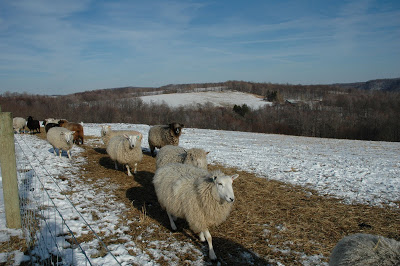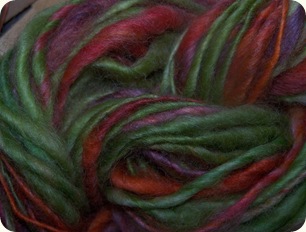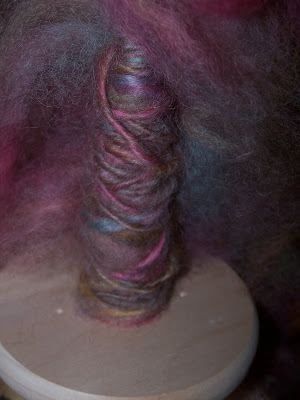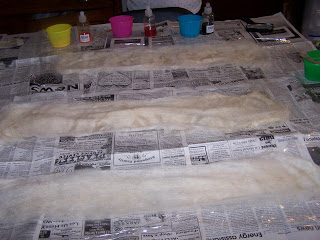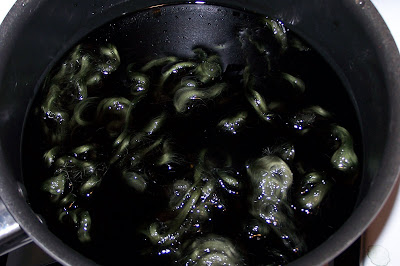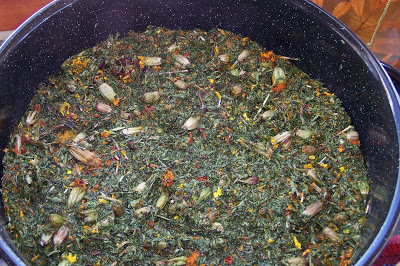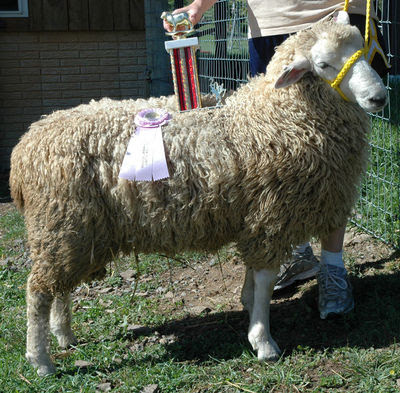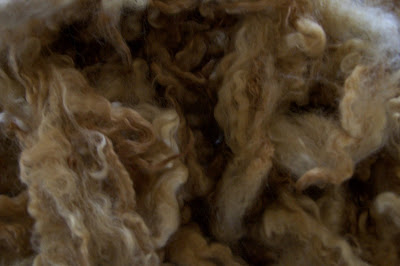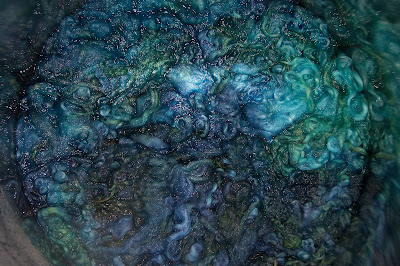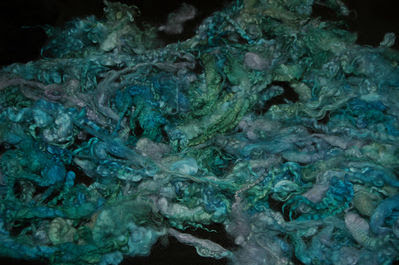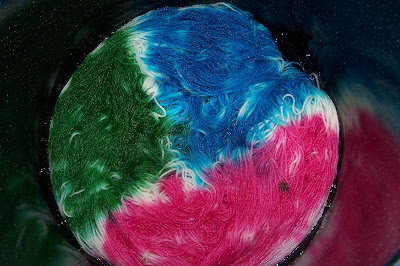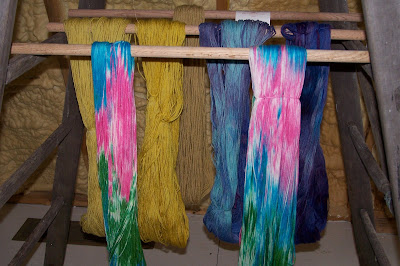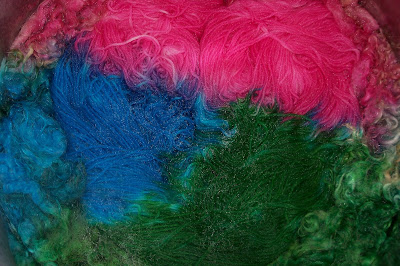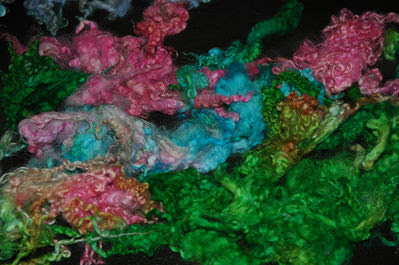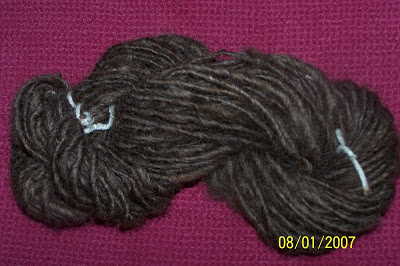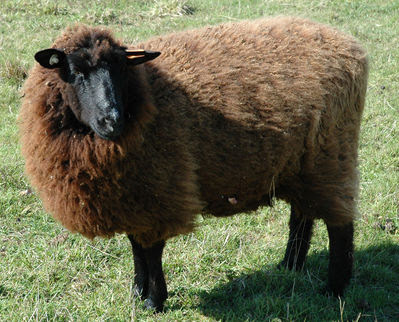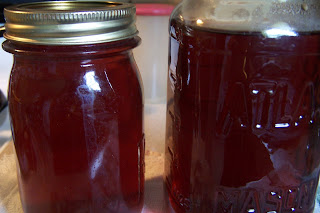Tag: wool
Rhubarb
Spring is not complete without the great taste of rhubarb: pie, jello, crisp, jam . . . doesn’t matter as long as it is rhubarb. 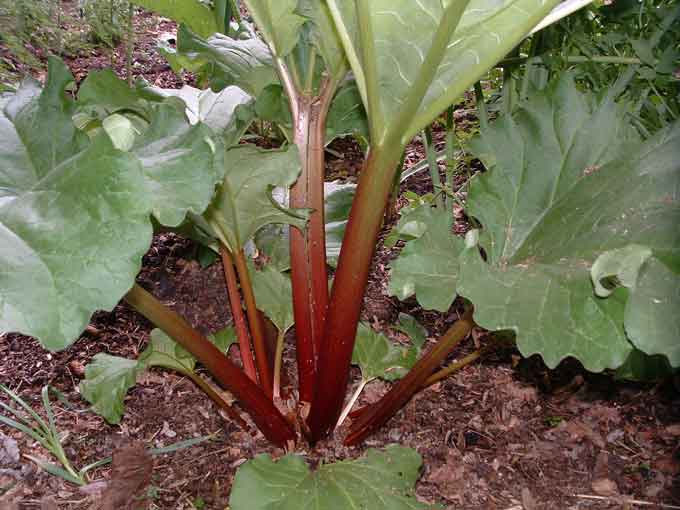 Recently, a very gracious neighbor shared her bountiful supply with us. Having recently seen somewhere that the leaves are good for dyeing wool, we requested the poisonous leafy tops be left on so we could shred them up and try our hand at dyeing. We ended up with 6 pounds of leaves. After soaking them overnight we put them on the stove. The boiling leaves smelled very good, and turned into a spinach-like mush.
Recently, a very gracious neighbor shared her bountiful supply with us. Having recently seen somewhere that the leaves are good for dyeing wool, we requested the poisonous leafy tops be left on so we could shred them up and try our hand at dyeing. We ended up with 6 pounds of leaves. After soaking them overnight we put them on the stove. The boiling leaves smelled very good, and turned into a spinach-like mush. 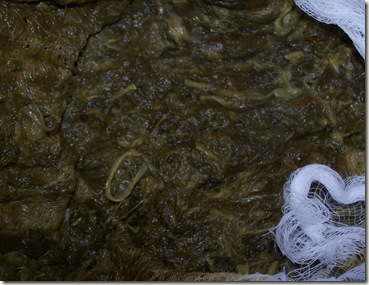 We tried 4 ounces of wool in one of the pots, (had to boil them in 3 different pots we had so many) simultaneously mordanting with alum and cream of tarter. Brought to 200 degrees for 45 minutes producing a kind of semi-pretty gold/yellow/green color not represented very well in the following picture:
We tried 4 ounces of wool in one of the pots, (had to boil them in 3 different pots we had so many) simultaneously mordanting with alum and cream of tarter. Brought to 200 degrees for 45 minutes producing a kind of semi-pretty gold/yellow/green color not represented very well in the following picture: 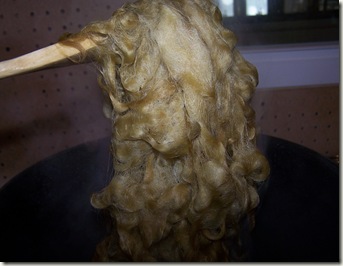 Then for the last 15 minutes we added tin mordant which turned it a pretty bright yellow which is actually somewhere in the middle of the hues that the camera picked up in these two pictures.
Then for the last 15 minutes we added tin mordant which turned it a pretty bright yellow which is actually somewhere in the middle of the hues that the camera picked up in these two pictures.  Closest to this brighter color.
Closest to this brighter color. 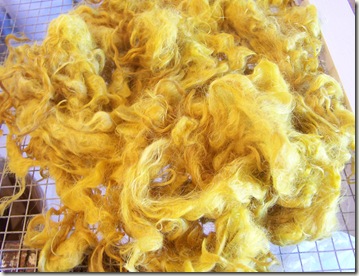 Which is really one of the prettiest yellows we have gotten from our natural dyes. We may just have to try this same process again.
Which is really one of the prettiest yellows we have gotten from our natural dyes. We may just have to try this same process again.
Spinning Easter Egg Painted Roving
Using two different batts that we colored with Easter egg dyes and kool-aid, I spun this colorful little skein on the drop spindle. 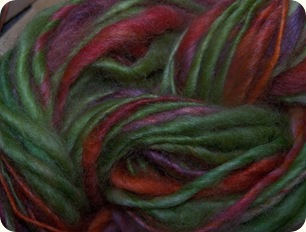 I stripped each of the two batts into narrow strips and alternated them on the spindle.
I stripped each of the two batts into narrow strips and alternated them on the spindle. 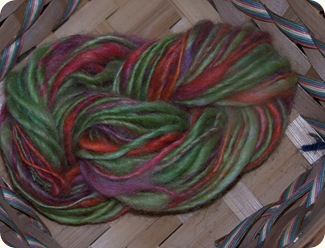 It made a beautiful mix of greens and oranges.
It made a beautiful mix of greens and oranges. 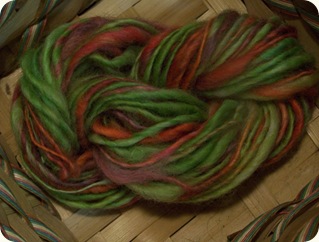 Will make great colorful stripes in a hat or scarf. Hmmm…..
Will make great colorful stripes in a hat or scarf. Hmmm…..  Any ideas????
Any ideas????
Spinning With Color
 And she also has been designing spinning batts using wool from one of our our Lincoln cross ewes layered with stripes of the carded locks from the canning box of color adding generous amounts of angelina for sparkles. Some of these were given as Christmas presents to her aunts. But, she couldn’t resist spinning up some for herself on the Minstrel with this result:
And she also has been designing spinning batts using wool from one of our our Lincoln cross ewes layered with stripes of the carded locks from the canning box of color adding generous amounts of angelina for sparkles. Some of these were given as Christmas presents to her aunts. But, she couldn’t resist spinning up some for herself on the Minstrel with this result:
Canning Box of Color
 Everyone got in on the artistic fun.
Everyone got in on the artistic fun. Then saran wrap and to the microwave.
Then saran wrap and to the microwave.
 Then to the drying rack.
Then to the drying rack. The left over dyes went to locks for a canning box of color!
The left over dyes went to locks for a canning box of color! Pics of spun dyed batts to follow soon.
Pics of spun dyed batts to follow soon.
The Dye Pot
The daisies were harvested from roadside, field, and flower gardens: over 2 lbs worth was chopped up and boiled for a couple of hours 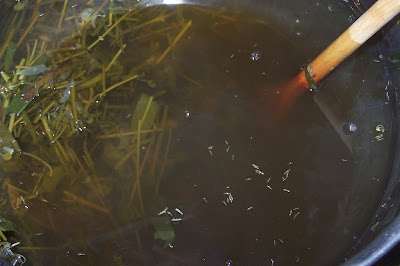 yielding this color of dye bath after straining:
yielding this color of dye bath after straining:
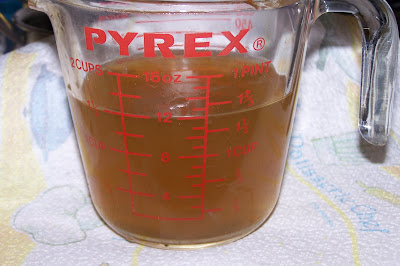 Baking soda was added along with about 7 oz. of unmordanted wool. The addition of the baking soda is suppose to result in a chartruse colored wool. It didn’t seem to be taking up much dye so I added alum as an additional mordant. So far the wool is looking Surprise!! Yellow.Tomorrow after I take out the wool I am going to see what the addition of more baking soda will do the dye bath and dunk some of the wool back in to see if it changes any. If not, yellow IS a very pretty color.
Baking soda was added along with about 7 oz. of unmordanted wool. The addition of the baking soda is suppose to result in a chartruse colored wool. It didn’t seem to be taking up much dye so I added alum as an additional mordant. So far the wool is looking Surprise!! Yellow.Tomorrow after I take out the wool I am going to see what the addition of more baking soda will do the dye bath and dunk some of the wool back in to see if it changes any. If not, yellow IS a very pretty color.
A Productive Dyeing Day
We began the day by preparing a Marigold Dyebath, breaking up a large amount of dried stems, leaves, and flowers in the dyepot and simmering for an hour.
From this stinky ugly brown concoction, we got some very lovely yellow hanks of yarn
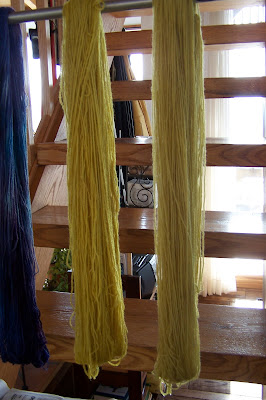
and the next day a more golden/tan color on some locks of wool from our Coopworth cross ram lamb, Goliath.
While the marigolds were beginning their magic, we used our canned hibiscus liquid to begin dyeing another hank. This yarn is still soaking for a couple of days.
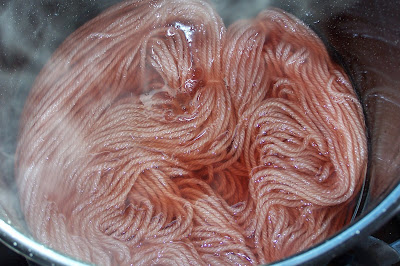
We also did some rainbow dyeing of yarn and mixed lamb locks. First, using turquoise, purple and periwinkle.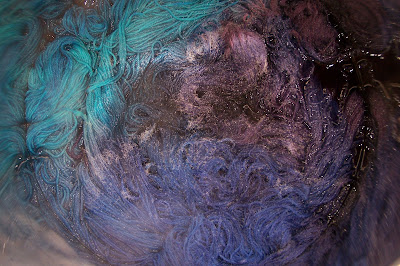
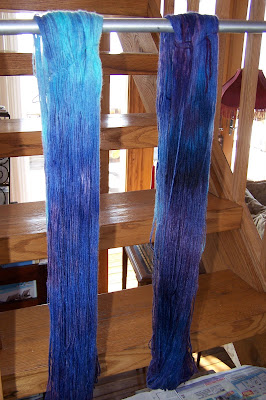
And then using emerald (brightened with some yellow), pink and turquoise.
Using up our left over emerald, we rainbow dyed some additional locks.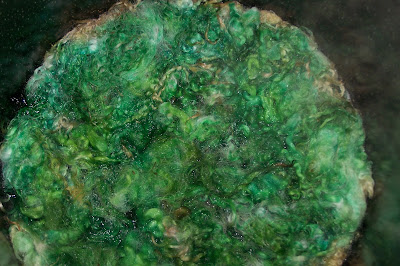
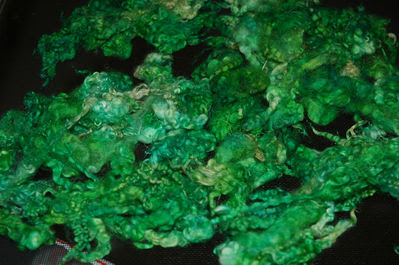 Woo Hoo!! We feel like we accomplished a lot!
Woo Hoo!! We feel like we accomplished a lot!
Warm Wooley Hats
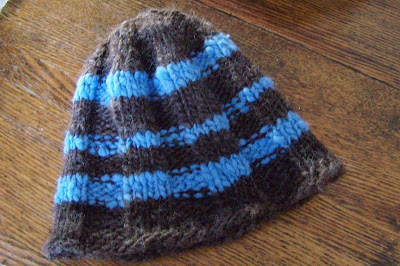
The beautiful brown was gifted to us from our coopworth cross ewe Hera. The blue yarn is spun from wool we dyed in a spinning/dyeing classes we participated in.
It is so fun, and such a feeling of pure accomplishment, to make something starting from the very beginning of the process — raw wool.
This one looks better on a model!
Hibiscus Flowers
We have been picking hibiscus blooms almost every day from our 4 new little plants. After about 2 weeks of gathering and storing in the refrigerator, we get enough to simmer to make a tea for dyeing wool yarn.
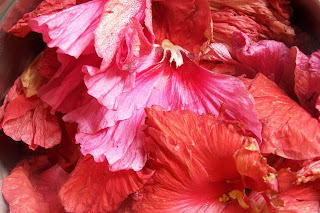
The pretty petals look kinda sad after the pigment is simmered out.
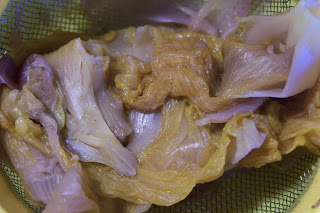
We are hoping that sealing it in canning jars will keep it fresh until we accumulate enough to do some dyeing, and are looking forward to using our own natural dyes.
